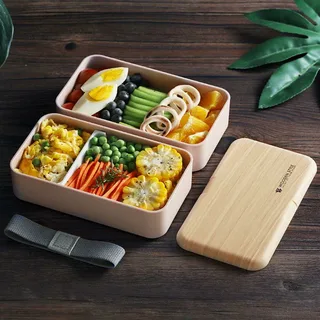Lunch boxes have been an essential part of daily life for many generations, serving as a practical way to carry meals away from home. Over time, these containers have undergone significant changes, adapting to lifestyle trends, technological advancements, and consumer needs. In this article, we explore the evolution of lunch boxes: from metal tins to smart containers, highlighting how this humble item has transformed through the ages.
The Early Days: Metal Tins and Practicality
The story begins with the classic metal lunch box, which dominated the early and mid-20th century. These lunch boxes were primarily made of tin or aluminum, offering durability and protection for food. Metal tins were often decorated with popular cartoon characters or vibrant designs, making them particularly appealing to children.
However, despite their nostalgic charm, metal lunch boxes had limitations. They were prone to dents and rust, and they lacked insulation, which meant hot foods could quickly cool down. Still, these tins represented a significant step forward in making packed lunches portable and convenient.
Transition to Plastic and Insulated Designs
As materials science advanced, plastic became the preferred material for lunch boxes. The 1980s and 1990s saw the rise of lightweight, colorful, and affordable plastic containers. These lunch boxes were easier to clean, more resistant to damage, and came in a variety of shapes and sizes to suit different needs.
Insulated lunch boxes also became popular, thanks to their ability to keep food warm or cold for extended periods. This development was a game-changer for working adults and school children alike, improving the freshness and enjoyment of meals on the go.
The Digital Age: Smart Containers and Beyond
The most recent chapter in the evolution of lunch boxes: from metal tins to smart containers is the integration of technology. Modern lunch boxes now incorporate smart features designed to enhance convenience and food safety. Some smart containers come equipped with temperature control, built-in heating elements, or cooling systems powered by rechargeable batteries.
Additionally, app connectivity allows users to monitor and control their lunch boxes remotely, ensuring their meals are kept at optimal temperatures until mealtime. Others include compartments with sensors to track freshness or portion sizes, reflecting growing trends toward health consciousness and smart living.
Sustainability and Future Trends
Alongside technological innovation, sustainability has become a key focus in lunch box design. Eco-friendly materials like bamboo, stainless steel, and biodegradable plastics are gaining popularity as consumers become more environmentally aware.
Looking ahead, the evolution of lunch boxes is likely to continue blending technology, convenience, and sustainability. We may soon see containers with advanced preservation technology, AI-powered meal planning, or even self-cleaning features.
Conclusion
The journey of lunch boxes—from sturdy metal tins to innovative smart containers—mirrors broader changes in society, technology, and lifestyle preferences. As we’ve seen, the evolution of lunch boxes: from metal tins to smart containers reflects continuous innovation aimed at improving the user experience, food safety, and environmental impact. Whether you’re a fan of nostalgic tins or excited by futuristic designs, lunch boxes remain an essential and evolving part of daily life.


